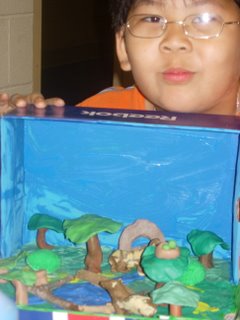Mystery Animal, by Philip
Vermont Animals - Mystery Animal...
By Philip
Can you guess what animal I am describing? It is cute, clever, part dog, different colors and can do cat stuff. If you’re thinking it’s a red fox, you’re right! I’m going to tell you about red foxes: where they live, what they eat, how they hunt, and other stuff.
Red foxes eat rabbits, voles, mice, rodents, snails, insects and eggs. A red fox is silent when it’s hunting its prey. Then it jumps, grabs its prey with its claws so it wouldn’t go away, and then kills them with its teeth. Red foxes are clever and they can trick their prey.
Foxes are in lots of stories. They are usually tricky and clever. Like if they were trying to catch a mouse and it couldn’t swim, the fox could say he could swim for him and the mouse would jump on his back. And the fox would jump and open his mouth and eat the mouse whole.
The female red fox, or vixen, chooses the strongest male, or dog fox, because if it has a baby the baby will become strong. The dog fox and the vixen will stay together forever if they get married. Litter is the name for all the cubs in a family. A baby fox, or cub, cannot see or hear for ten days after it’s born. When the cub is one-year-old, it’s strong enough to leave its den, or hole. Foxes go away so quickly from their parents!
Red Foxes’ habitats are in woodlands, hay fields, brushy areas, meadows and parks. A red fox borrows another animal’s home under the ground, like a badger if it died, because fox aren’t good at digging.
Thank you for reading this. I hope you had fun. I hope you like what I wrote and what I taught you about red foxes. Before I end this report, I want to tell you what I would like to do if I were a red fox. I would swim, jump, run and enjoy having a fox’s life.







